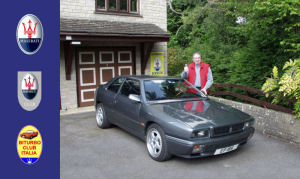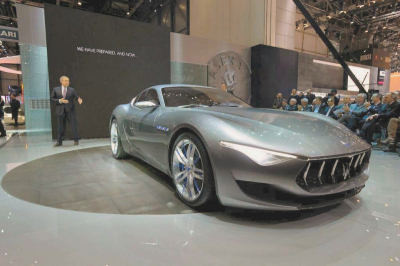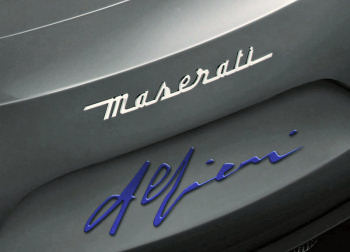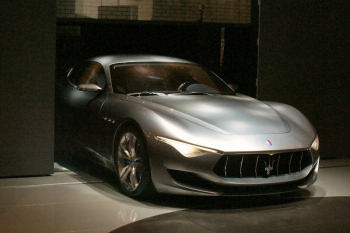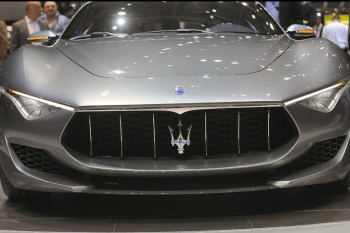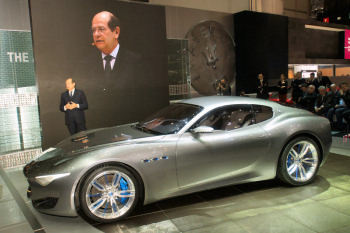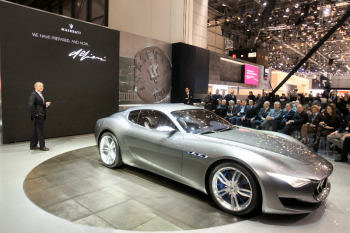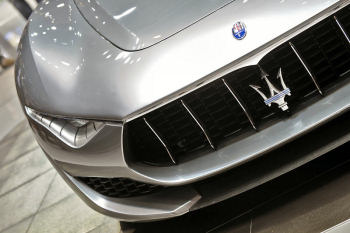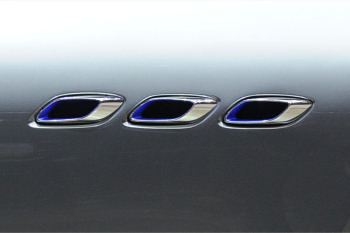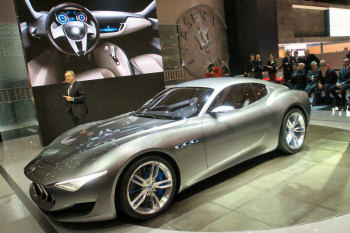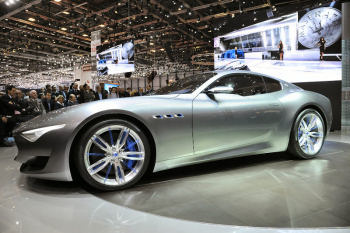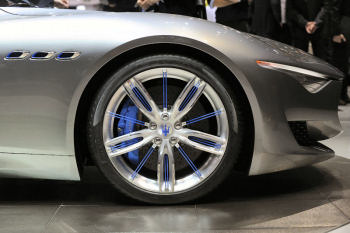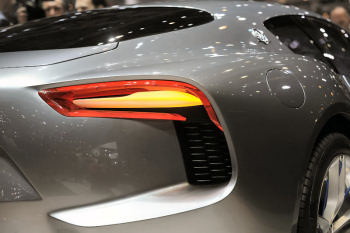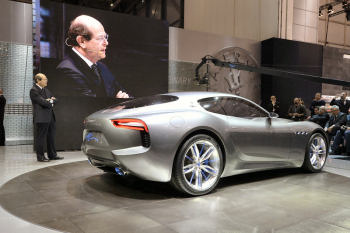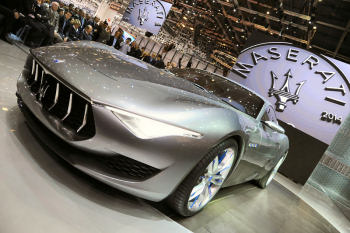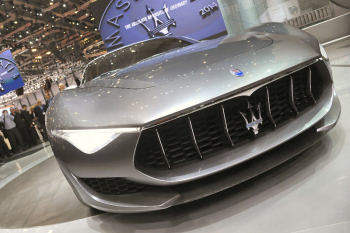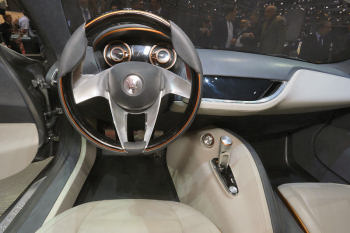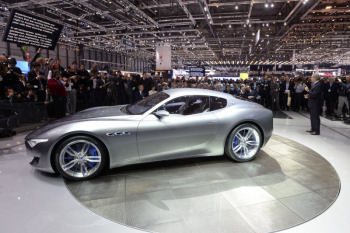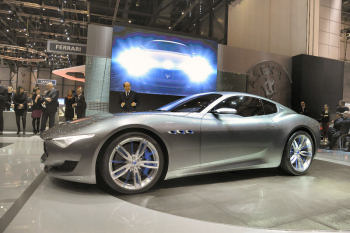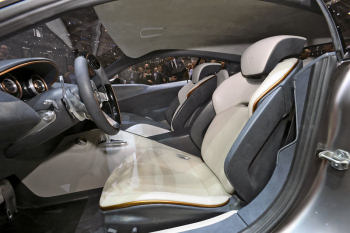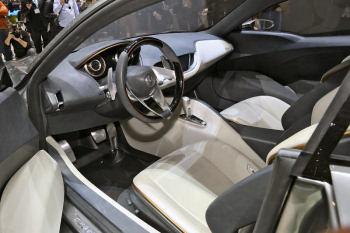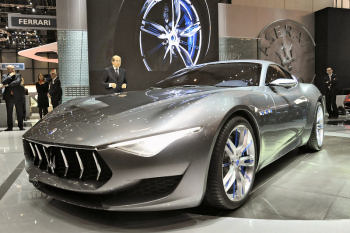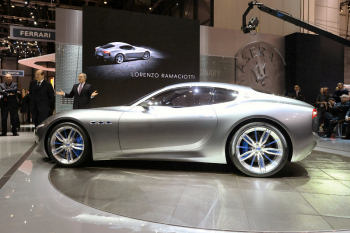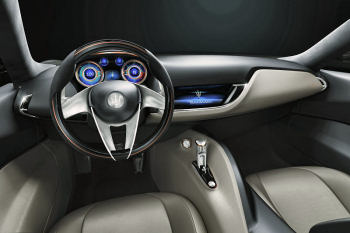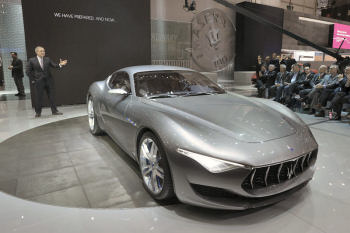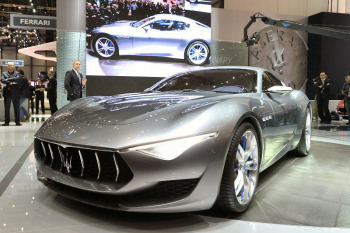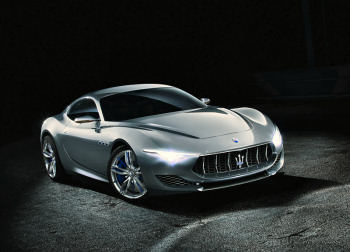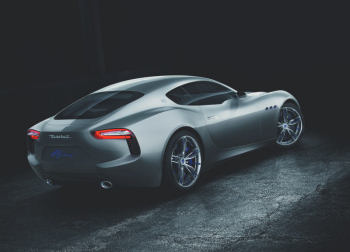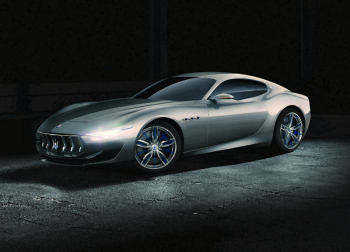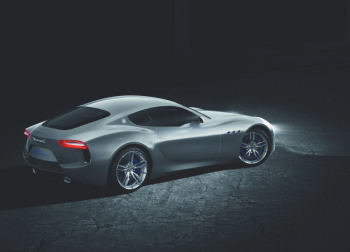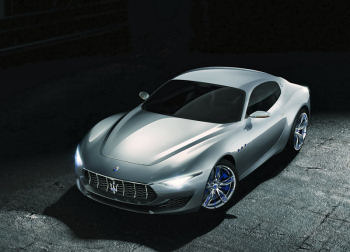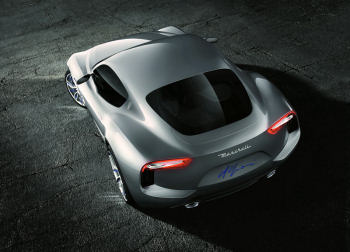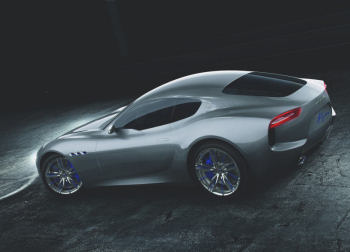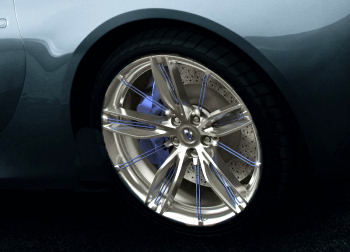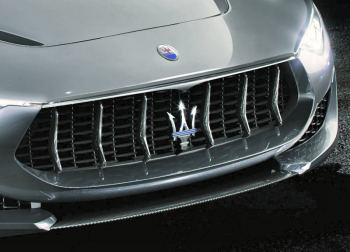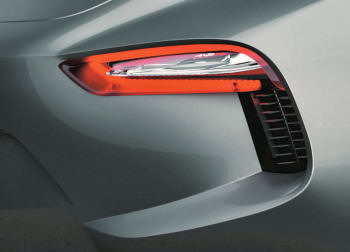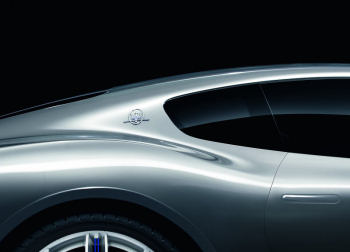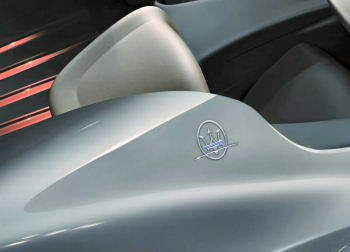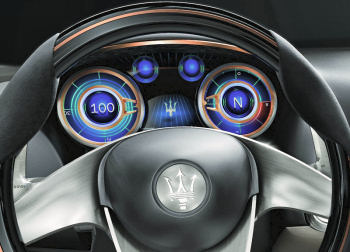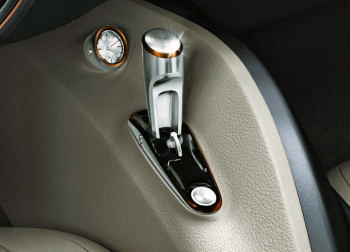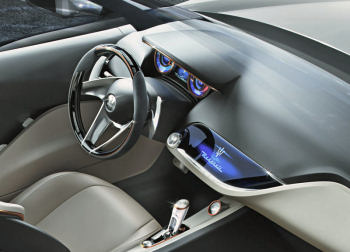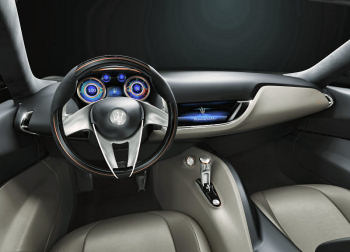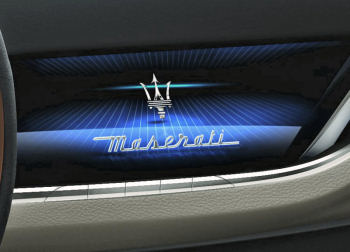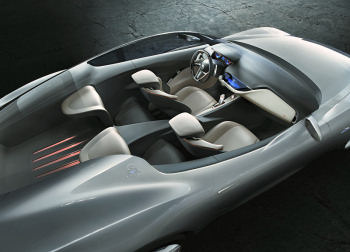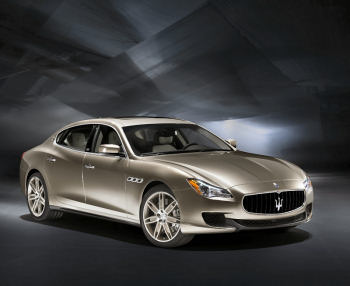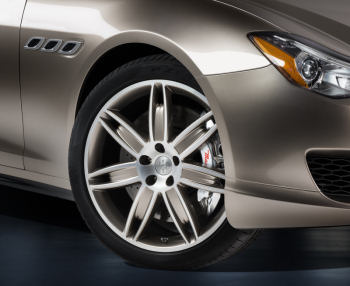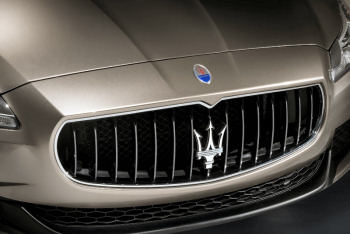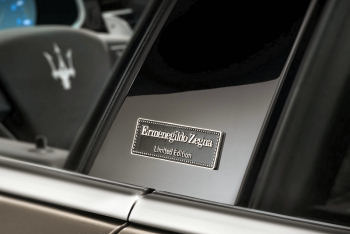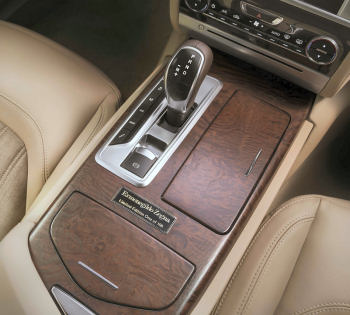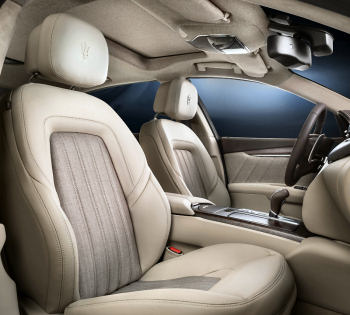In addition to the other unique features conceived and developed for this limited edition and the Quattroporte's already rich level of standard equipment, each of the one hundred Ermenegildo Zegna Limited Edition cars also include a series of items chosen to maximise driving pleasure in terms of comfort, refinement and practicality.
An opening sunroof, front seat ventilation and a four zone climate control system for the rear passengers have been added to achieve the highest possible level of on-board comfort.
The car is also fitted with an exclusive Bowers&Wilkins Premium Sound System with 15 speakers, including a powerful sub-woofer, a 1280 Watt amplifier and Quantum Logic Surround technology.
Standard equipment includes steel pedals with rubber inserts, a removable ash-tray in the front drinks holder, and an 18” space-saver spare wheel in the boot.
Under the bonnet of the Maserati Quattroporte Ermenegildo Zegna Limited Edition lies a mighty V8 twin-turbo capable of developing 530 HP and an impressive torque of 710 Nm. This engine pushes the car to a top speed of 307 km/h and accelerates it from 0 to 100 km/h in just 4.7 seconds.
MASERATI TROFEO MC WORLD SERIES 2014
The Maserati MC World Series Trophy was launched in 2010 and is now about to begin its fifth season with a calendar of events arranged in six rounds and visiting six countries on three different continents. After collective trials on the 12th April in Vallelunga, the first race of the season will take place over the weekend of the 2nd and 3rd May on the Spa circuit in Belgium, coinciding with the World Endurance Championship. The second round, scheduled for the 31st May and 1st June, moves to the Hungaroring track in Hungary to complement the third meeting of the DTM series. On the 19th and 20th July, the Silverstone circuit in the UK will host the racing, along with the International GT Open, concluding the first part of the season. The European Trophy will be presented to the driver leading the points table after these first three races.
The second part of the series kicks off in the USA on the 23rd and 24th August with the Maserati MC World Series Trophy moving to the Virginia International Raceway near Danville, Virginia, on the occasion of the Tudor USCC Championship. After this visit to America, the cars will fly to Shanghai in China for the 11th and 12th October, to partner the WTCC. As in 2013, the final race of the season will be held on the Yas Marina circuit in the United Arab Emirates on the 11th and 12th December to coincide with the Abu Dhabi 12 Hours race. The season's closing ceremony will also take place here. Prizes will include: the Overall Winner's Trophy (open to all drivers), the European Trophy (also open to all drivers), the Pirelli Single Driver Cup (for single drivers racing Maserati-owned cars), the Pirelli Twin Drivers Cup (for drivers racing in a two-man team with Maserati-owned cars), the Over 50 Trophy, the Under 30 Trophy, and the Pirelli Pole Position Award.
The large number of applications received for this 2014 edition confirms the excellence of the event's organisation, based on an all-in package that includes intensive activities for single and team drivers, exclusive accommodation at all the events and the enticing prospect of racing a Maserati in the company's centenary year. Statistics for 2013 prove that the Maserati single marque formula is a winner: 18 races with an average of 26 Maserati GranTurismo cars lined up on the grid, 70 drivers from 22 different countries, and a total of 688,828 kilometres covered in 29,640 minutes of racing.
The Belgian Renaud Kuppens won the 2013 season, repeating his exploit of 2012.
The registration fee for the official trials and three European races is 70,000 Euros (excluding VAT). That for the World Series is 125,000 Euros (excluding VAT), payable by the 15th March (the cost of late payments rises to 130,000 Euros).
Privateer drivers are welcome to enter their own cars in the Trofeo Maserati, provided they pass Maserati's technical inspection and homologation. Al teams must use the same setup with no changes or adjustments permitted.
This year's Maserati GranTurismo MC Trophy introduces a number of developments that have been worked out in recent months. Changes mainly concern aerodynamics, with the adoption of a new, completely redesigned rear diffuser and front splitter and the introduction of a completely flat underbody to increase downforce on the front of the car and balance the large rear spoiler. A rear anti-roll bar has also been added to improve control and precision on bends. The engine remains the 4,691 cc V8 unit which develops 488 HP. Weight too remains the same, at 1,380 kg. All cars entered for the series are prepared by a team of expert mechanics to ensure the same level of performance and have the same set-up.
The duration of the longer race increases this year from 50 to 60 minutes. Qualifying is spread over two 15-minute sessions, while practice covers two sessions of 45 minutes. The two 30-minute races, the longer race and the mandatory pitstop are confirmed, giving a total of 240 minutes behind the wheel every race weekend.
MASERATI CENTENARY
Maserati is celebrating its centenary in 2014. One hundred years have passed since Alfieri, Ettore and Ernesto Maserati opened their first workshop in Bologna on December 1, 1914.
Maserati is celebrating its 100th anniversary in grand style all over the world. Celebrations started on December 2, 2013, the day the company entered its 100th year and will last for twelve whole months until December 2014.
The epicentre of these truly global celebrations will be in Modena, the town to which Maserati moved in 1939 and where the company’s global HQ is still located.
From June through December the Museo Casa Enzo Ferrari will be hosting a special exhibition dedicated to the Maserati centenary. In September, the official international Maserati gathering will bring to Modena at least 300 vintage Maseratis from all over the world.
FINANCIAL RESULTS
For 2013, Maserati posted a 148% increase in shipments to 15,400 vehicles, driven by the success of the new Quattroporte and Ghibli models launched during the year. For the Quattroporte, which was released in March, shipments totaled 7,800 units. For the Ghibli, a total of 2,900 units were shipped between launch in October and year end. At 31 December, order intake for the two new models totaled 13,000 units apiece.
Combined shipments for the GranTurismo and GranCabrio were in line with 2012 at 4,700 units for the year. All markets contributed positively to the significant year-over-year increase. The USA remained the brand’s number one market with shipments up 138% over the prior year to 6,900 units. China, the brand’s second largest market, recorded the highest percentage increase with shipments up 334% to 3,800 units. Even in Europe, where economic conditions remained difficult, shipments were up 133% to 2,500 units on the back of the contribution of the new models. Results were also strong for the Asia-Pacific region (excluding China) and the Middle East, which registered increases of 52% (1,300 vehicles) and 81% (750 vehicles), respectively.
Revenues totaled €1,659 million for the year, an increase of 120% over 2012.
Maserati closed 2013 with full-year trading profit of €171 million, or 10.3% margin, representing a €114 million increase over the prior year (€57 million in 2012).
EBIT, which included a €65 million write-down of previously capitalized R&D related to a new model the development of which has now been switched to a more technically advanced platform considered more appropriate for the Maserati brand, totalled €106 million. The year-over-year improvement reflected the significant increase in volumes.
Maserati’s fourth quarter revenues totaled €776 million, representing 47% of revenues for the full year and nearly four-times the Q4 2012 level, with a significant contribution from the newly-launched Ghibli.
Trading profit was €123 million for the quarter, an increase of €110 million over Q4 2012.
EBIT, which included the above mentioned unusual charge, was €58 million.
Text and photos courtesy of Maserati |
